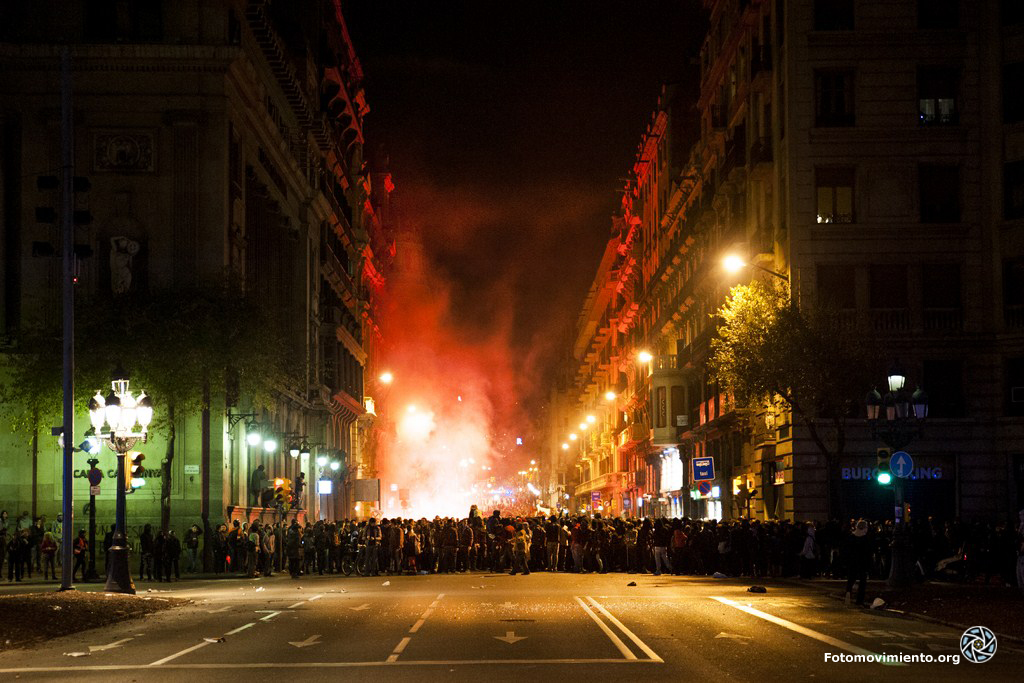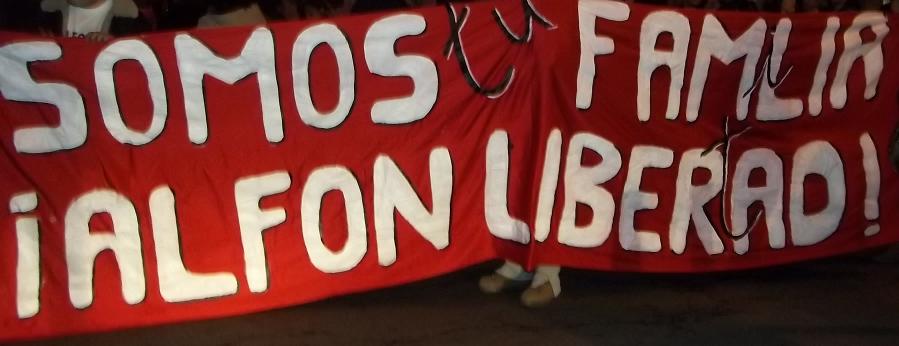
The 14th of November general strike in Barcelona started in the very first hours of the night, with pickets closing bars and spaces still open at night in several city’s neighborhoods, such as Gràcia, where more than 300 people managed to shut down bars, while a supermarket and banks were attacked by hoodies. Earlier, trade unions pickets had blocked the accesses to industrial parks of the metropolitan area, where no activity was reported at all. No one was arrested during the night. As the sun was rising, fire barricades were erected in all city’s points, with police making the first arrest of the day in the Eixample neighborhood. At 8am neighborhood assemblies pickets started shutting down the whole city, with Sants and Gràcia being the areas with more police presence, mainly due to incidents during the M29 strike. Barricades were set up in Gràcia to prevent Mossos from reaching the picket. The turnout in the neighborhoods, both in pickets and strike following, was higher than in all previous strikes. Although no central picket had been called, strikers spontaneously gathered from noon on in Plaça Catalunya, were the biggest picket of the day kicked off. When this reached the boardwalk, an undercover cop attempted to arrest a striker, which caused demonstrators to attack other secret cops, who were rapidly rescued by a riot unit.
At 5pm an anticapitalist demonstration organised by neighborhood assemblies, M15, CNT, CGT, independentist left and autonomous anarchists had been called at Jardinets de Gràcia, just some meters away from where the demonstration by yellow trade unions CCOO and UGT was taking place. The anticapitalist demonstration was constantly surrounded by units of riot cops geared up with gas masks and rubber bullets guns. Along the way, banks and capitalist symbols were attacked with paints and stones although police didn’t charge until the demonstration had finished in Via Laietana, where cops started firing rubber bullets and crowds of hoodies answered with stone and bottle throwing, as well as homemade missiles. Two Spanish police cars and a bank were set on fire. The crowd was suddenly dispersed by a group of 20 riot vans which quickly arrived and clashes moved to the narrow streets on the side of Via Laietana, at the Born neighborhood. There, protesters (some of them filling the air by singing A las barricadas) resisted during an hour the attacks of riot police. The main entrance of the Palace of Catalan Music, symbol of corruption from the currently ruling party in Catalonia, was destroyed. Several cars and trash bins could be seen on fire in the surrounding streets.
[youtube width=”560″ height=”315″]http://www.youtube.com/watch?v=CKj-pNY8Jy0[/youtube]
At the time the more confrontational demonstrators had dispersed, cops started clearing the whole centre area, charging against people who were merely walking back home. In one of these attacks, a woman was shot in one of her eyes by a rubber bullet and eventually lost her sight in it. Felip Puig, head of police in Catalonia, has lied by denying that rubber bullets had been used that day, although what actually makes the matter more disgusting is the fact that they were actually shot from a newly acquired type of guns which allows cops to aim, which means that the cops were probably aiming at the protesters’ eyes. Finally, 23 people were arrested and many injured.
The strike was the biggest in the city since 1988, due in part to the aim set on the first of the austerity crisis strikes on September 29th 2010: to turn these general strikes into social strikes, where all kinds of movements and social communities could feel part of it. This time, even more communities joined the strike and once more, alternative trade unions along with social movements managed to break through the lines of the agreed, planned and designed strike by the yellow trade unions and turned the strike into a day of struggle beyond the limits of this institutionalized trade unionism.



